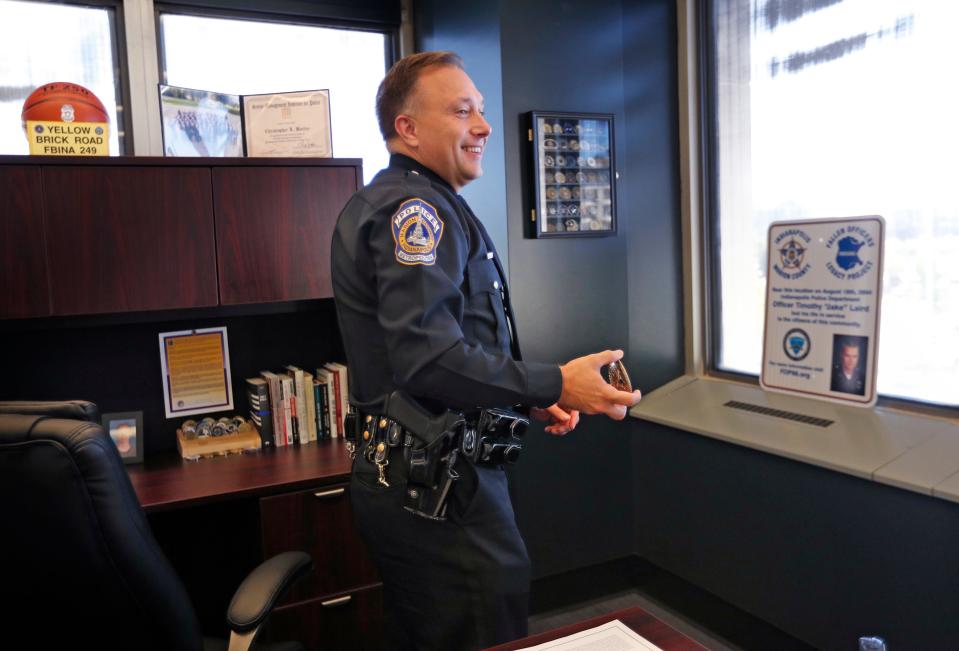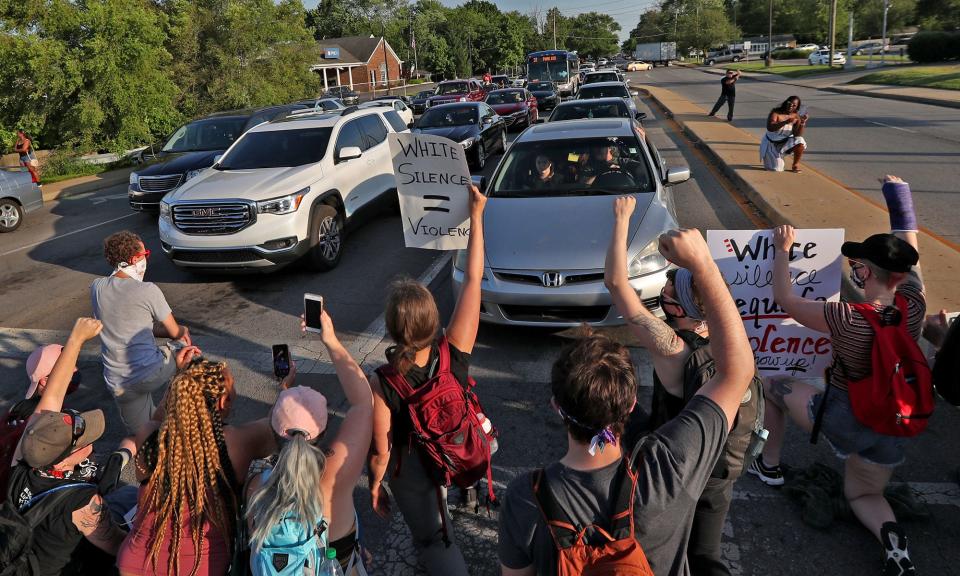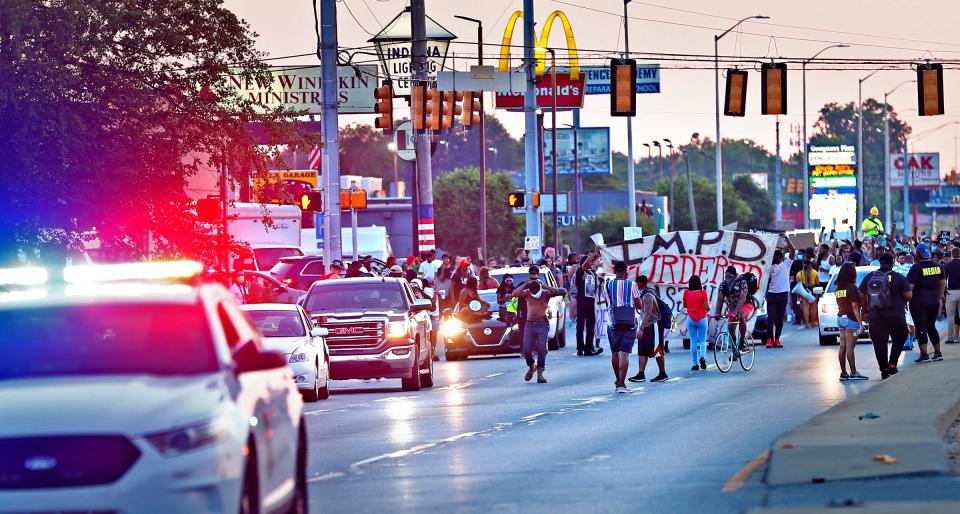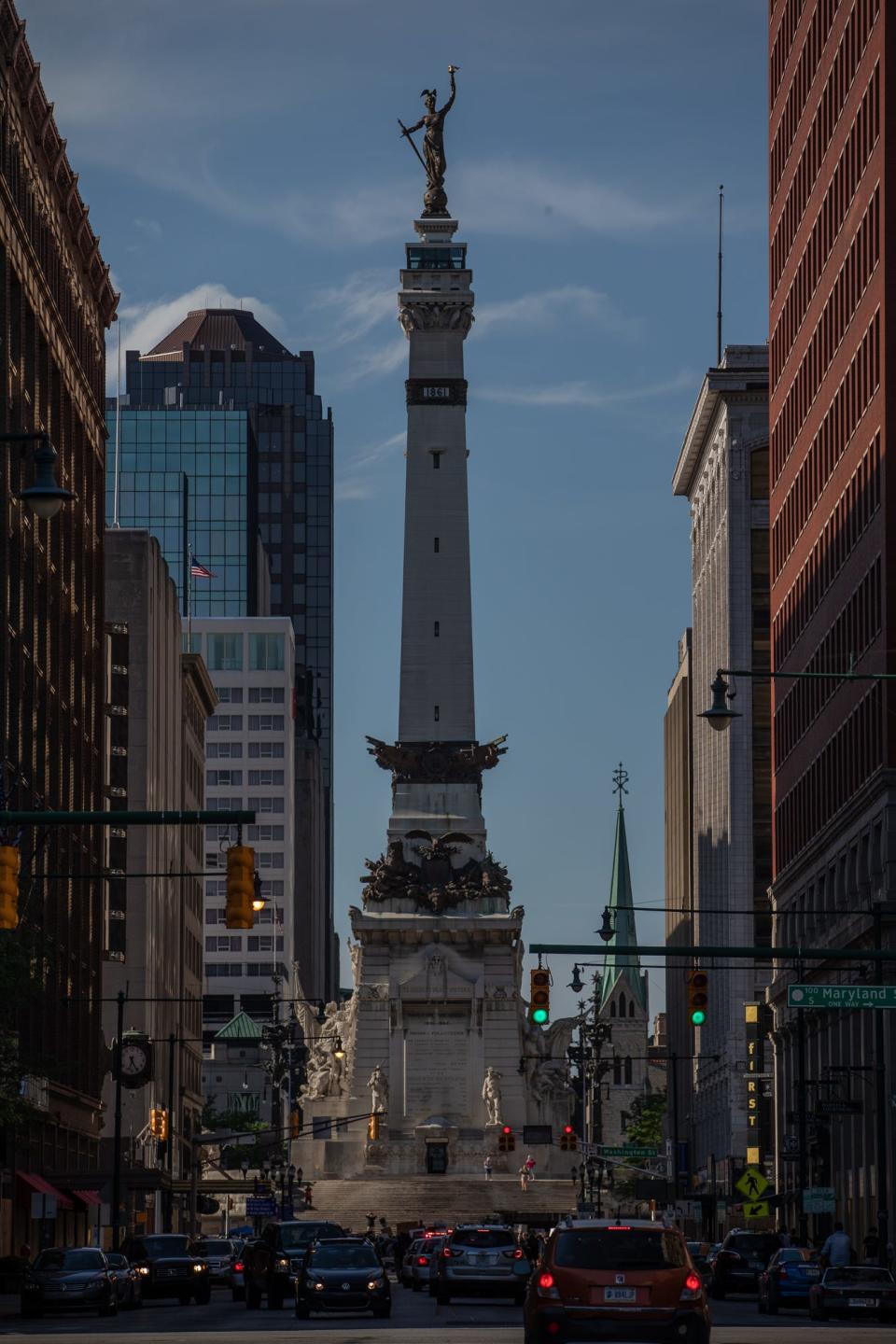'Community should have a say': IMPD use-of-force policy may again change under new law
For years, Indianapolis community members have pushed their police department to overhaul its policy dictating how and when officers can use force on civilians. Now, they worry that a new state law will undercut those efforts.
Senate Bill 294, signed into law last month, passed through the Indiana General Assembly largely unnoticed. The measure's language was straightforward: It would add members to the state's Law Enforcement Training Board and give that board the ability to set minimum standards regarding the handling of police pursuits and protests.
The legislation also called for statewide policies governing police use of force and defensive tactics.
But advocates interviewed by IndyStar say they are concerned a uniform, mandated use-of-force policy for law enforcement agencies across Indiana could hamper a years-long push from the community for change in the Indianapolis Metropolitan Police Department.
'They would have been able to stop it': Nakota Kelly's mother wants DCS to admit wrongdoing
Will the state's policy, they wonder, look like that of Indianapolis or others in rural Indiana?
In recent years, both IMPD and city officials have answered the community, creating a civilian-majority Use of Force Review Board — billed as a step toward increasing transparency and trust — and updating IMPD's use-of-force policies with input from community members. It's efforts like these, some say, that are now in question.
"Our (policy) was driven by Marion County making sure that we have community input, communication with the community, so that that voice was heard from," said Pastor David Greene Sr., president of the civil rights group Concerned Clergy of Indianapolis. "As we move it to a state level, I’m concerned that things are going to get diluted.”

Still, SB294 garnered unanimous support in the General Assembly, receiving backing from the state police union, state police and the sheriff's association. Experts in law enforcement policy, too, told IndyStar the new measure is likely to move many departments forward.
"I don’t think the uniform policies that they would enact are going to be steps backwards for anybody," said Kevin Jowitt, the former Noblesville police chief and an adjunct professor at Indiana University's O'Neill School. "They may look a little bit different, but I think the Law Enforcement Training board will seek policies that represent best practices."
'Continuity and consistency'
The new measure was proposed largely in response to a 2021 report commissioned by the governor that examined Indiana's law enforcement curriculum and training.
Business: Electric vehicles would mean jobs for Indiana, but at what cost to workers, environment?
The little-known board that governs the Indiana Law Enforcement Academy has for years set minimum training standards for law enforcement agencies across the state. In fact, SB294 increases the training board's membership to 23, adding the commanders of law enforcement academies, a person representing a minority-owned business and three other civilians from the general public to its ranks.
Indiana State Police Superintendent Douglas Carter, the chair of the board, indicated he felt it was necessary to delve into policy regarding use of force and defensive tactics to ensure officers continue to abide by the rules.
The board, Carter told IndyStar, realized there were "inconsistencies" with how agencies across the state handled critical issues like use of force despite having minimum training standards in place.

"When it comes to continuity and consistency, it’s really important that, no matter what agency you’re from, that there is some stability there," Carter said. "There’s a recognition of what an officer can and cannot do because they’re certified by the Law Enforcement Training Board."
"They’re not certified by their agency," he added. "They’re certified by the board.”
But Indianapolis is unlike other towns in Indiana. It has the largest population and, in turn, more incidents that attract a police response than other places.
IMPD Assistant Chief Chris Bailey noted IMPD's more than 1,600 officers tend to exceed training standards put in place by the board. He said policy from a state board that largely doesn't have accountability to the citizens of Indianapolis is "something we have to watch and monitor."
Health: As pandemic enters new stage, state health department changes how it reports COVID-19 data
While IMPD Chief Randal Taylor sits on the board, Bailey noted he is "just one voice."
"He should be a very large voice on that considering he leads the largest law enforcement agency in the state of Indiana — the one that has the most complex issues, that deals with the most incidents of violence and crime across the state of Indiana," Bailey said of Taylor.
"My hope is that his voice will carry a lot of weight.”
Changes to policy in 2020
Indianapolis police in July 2020 responded to protests against police brutality and calls for reform by announcing a new set of use-of-force guidelines for the department's officers.

The new policy put an emphasis on de-escalation tactics and updated language to specify that officers should only use force proportionate to the circumstances of a situation.
Previous iterations of IMPD's use-of-force policy allowed officers to use "reasonable force" if they believed it necessary. The guidelines adopted in 2020 more clearly defined when an officer could use deadly force and, in some areas, went further — including putting a ban on chokeholds.
Those efforts, however, are not new to law enforcement agencies in recent years, according to Jowitt, the former Noblesville chief. Jowitt cited the President's Task Force on 21st Century Policing report completed under the Obama administration that, in part, says policies about use of force should "emphasize de-escalation."
'A sad situation': Greenwood police shoot, kill woman in department parking lot after chase
The report also notes departments should "collaborate with community members to develop policies and strategies in communities and neighborhoods disproportionately affected by crime..." — a line of communication Indianapolis community members wish to preserve.
“We’re trying to maintain and build better relationships and ultimately get the bad guys off the street," said Greene, the pastor. "I just don’t think you can do that and not have community voice and have people from the community who are coming back to the community to say, ‘here’s what this is going to look like.’"
Marshawn Wolley, public policy director for the African American Coalition of Indianapolis, told IndyStar his organization was not aware of the legislation until it had passed the General Assembly. Community engagement, he said, is key to trust.

"You got law enforcement agencies wanting cooperation from the community," said Wolley, who has been involved in past discussions about use of force. "You want us to report crime, be good citizens — obviously, we’re going to do our part — but the community should have a say in how they are policed."
"This law seems to completely go against that."
A 'very methodical process'
The board's policy discussions have yet to begin.
The new law takes effect July 1, and Gov. Holcomb must appoint the board's new civilian members. It is not clear who they will be or from which parts of the state they will come.
Once the board is set, the group will begin "a very slow, very methodical process" of beginning to piece together a policy that works for departments across Indiana, Carter said.
"There's gonna be a lot of debate. There's gonna be a lot of discussion," Carter said. "And we will be as transparent and as open about it as we can."
He added: "I believe that the vast majority of Indiana residents want there to be consistency with these most important critical issues with policing."
For some in Indianapolis, though, making sure the voices of both the local community and the police department are heard throughout the process is imperative.
"We just have to make sure that our interests are heard at the board as we move forward,” Bailey, IMPD's assistant chief, said.
Contact Lawrence Andrea at 317-775-4313 or landrea@indystar.com. Follow him on Twitter @lawrencegandrea.
This article originally appeared on Indianapolis Star: Indiana use of force: IMPD's policy decided by state training board
